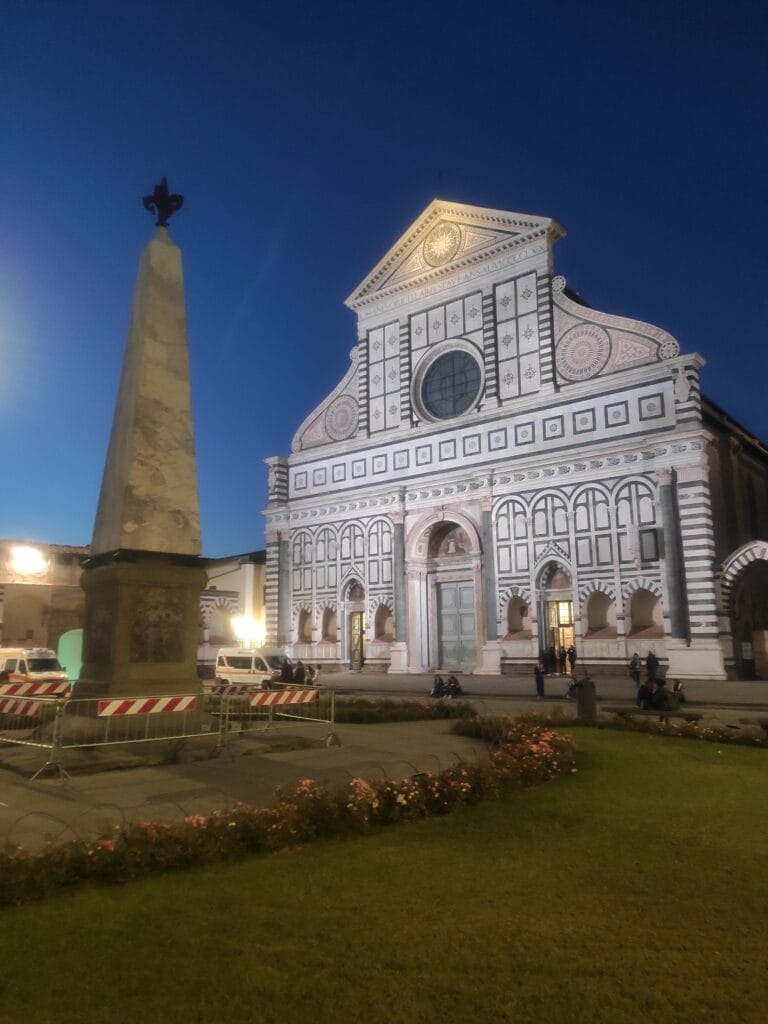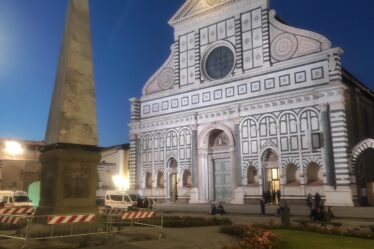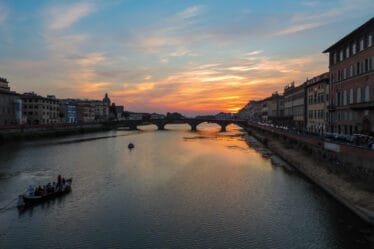

A Renaissance Dispute in Art and Vision
The story of the rivalry between Donatello and Brunelleschi is one of the most celebrated legends of the Florentine Renaissance. It reveals not only the competitive spirit of two iconic artists but also their distinct approaches to art and mastery.
Donatello’s Crucifix in Santa Croce
Donatello, known for his emotionally charged and realistic sculptures, created a crucifix for the church of Santa Croce. Confident in his work, he sought the approval of his friend and colleague, Filippo Brunelleschi. However, Brunelleschi’s sharp eye for perfection led him to remark that Donatello’s depiction of Christ resembled a farmer rather than the solemn figure of divinity.
This critique, delivered in jest, struck a chord with Donatello, igniting one of the most famous artistic challenges of the Renaissance.

Brunelleschi’s Response: The Crucifix of Santa Maria Novella
Brunelleschi accepted the challenge and meticulously crafted his own crucifix for the church of Santa Maria Novella. Leveraging his deep understanding of human anatomy and classical ideals, Brunelleschi created a masterpiece that embodied harmony, proportion, and an idealized portrayal of Christ.
When Donatello first saw Brunelleschi’s crucifix, the story goes, he was so overwhelmed by its perfection that he dropped the basket of eggs he was carrying, symbolizing his recognition of Brunelleschi’s superior artistic achievement.

Vasari’s Account of the Rivalry
Giorgio Vasari, the renowned chronicler of Renaissance art, immortalized this anecdote in his Lives of the Most Excellent Painters, Sculptors, and Architects. He quoted Donatello’s humorous concession:
“I for my part am content to have made a farmer; if you want Christ, take him for yourself.”
Artistic Visions: Realism vs. Idealism
This story is often used to illustrate the contrasting styles and philosophies of Donatello and Brunelleschi:
- Donatello’s Realism: A focus on raw emotion and lifelike detail, capturing the human essence.
- Brunelleschi’s Idealism: A pursuit of classical harmony and proportion, evoking divine perfection.
Their friendly rivalry exemplifies the creative ferment of the Florentine Renaissance, a period when artists competed and collaborated to push the boundaries of innovation.
Historical Significance and Legacy
While the tale is likely embellished over time, it underscores the competitive yet collaborative spirit of the Renaissance. Donatello and Brunelleschi’s interplay of criticism and admiration spurred each other to reach new heights in their craft, leaving a legacy that continues to inspire artists and art enthusiasts today.



